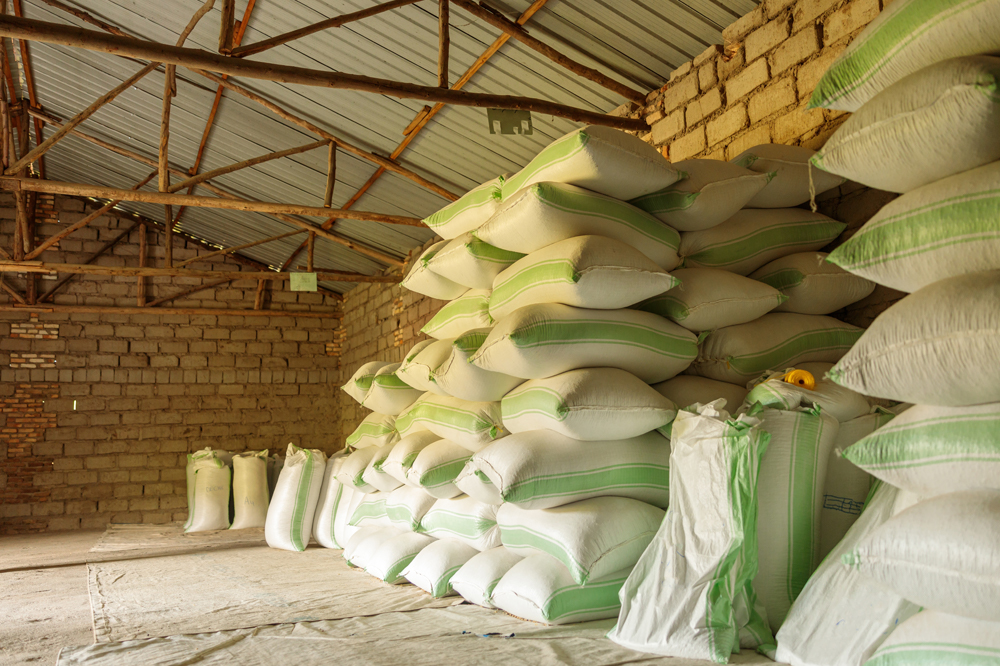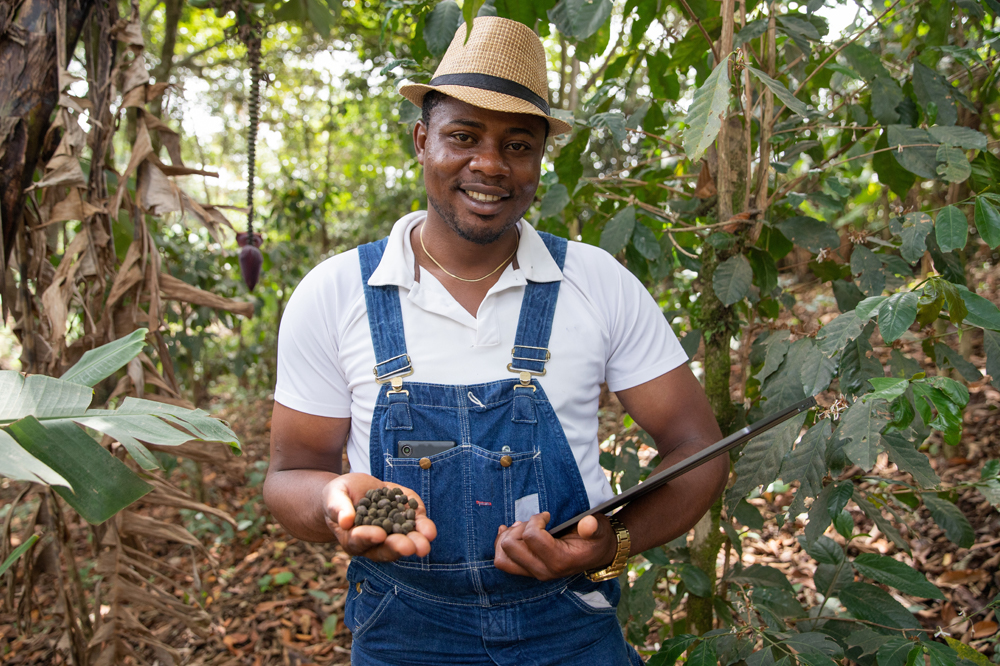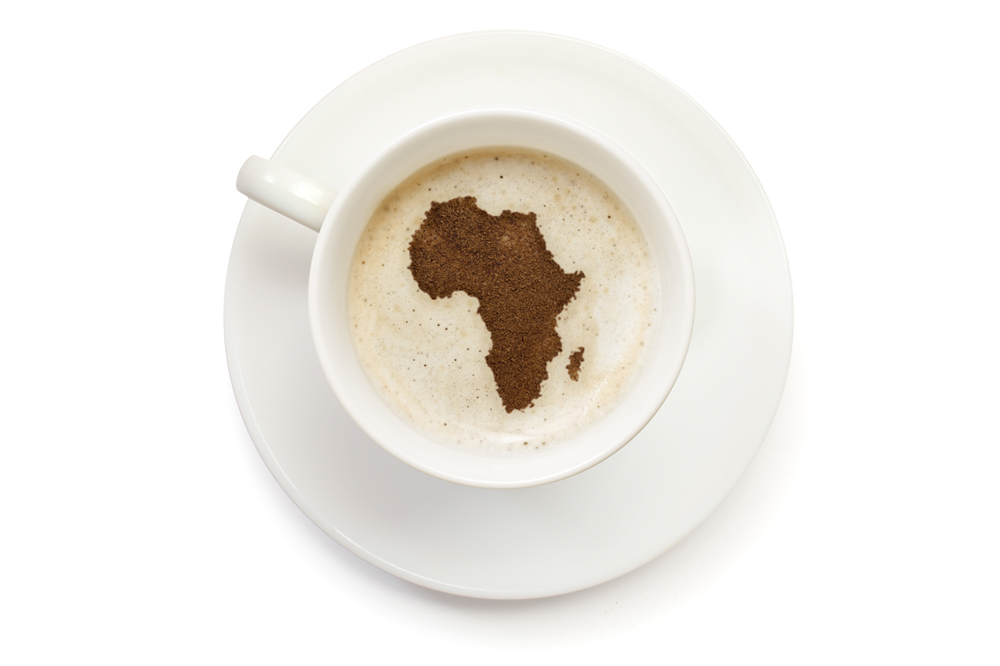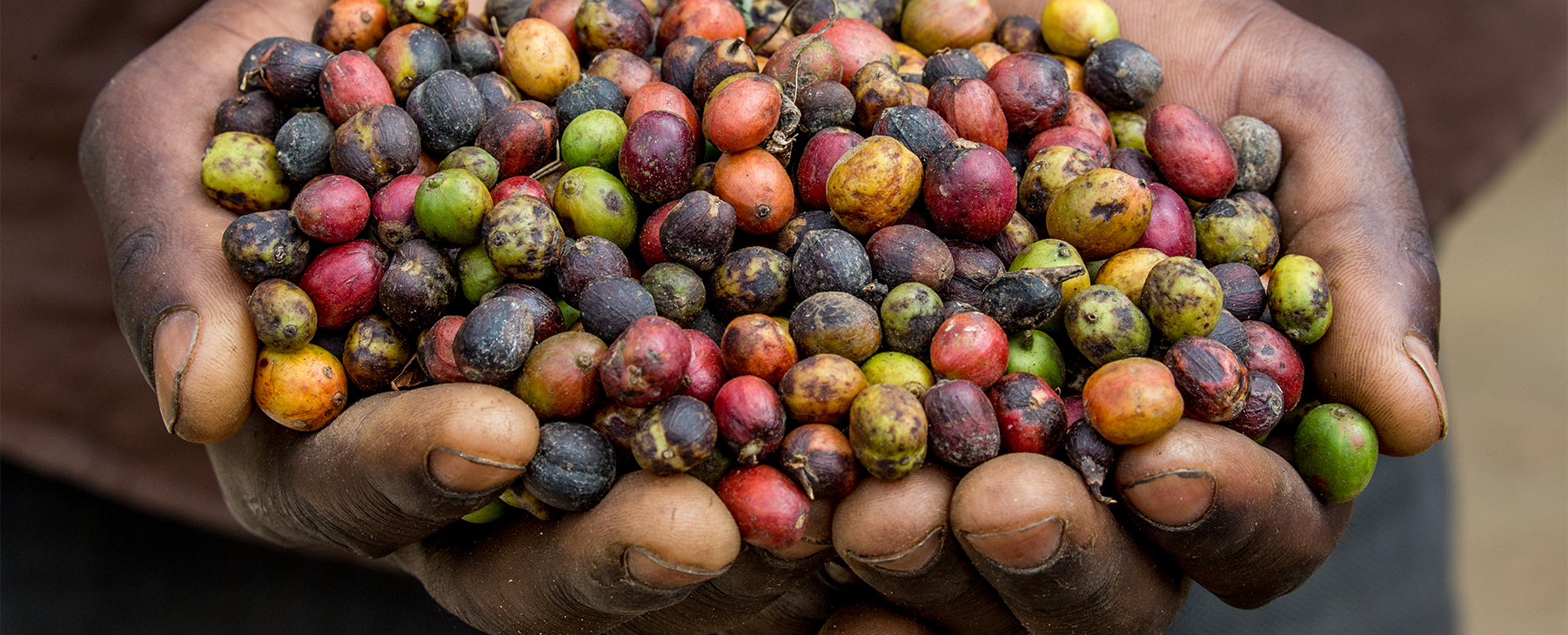Coffee growing goes back eons in Africa. Its origins were brewed in Ethiopia, where it was first cultivated several millennia ago. Numerous African nations are now heralded for the excellent quality of their coffee beans.
What makes the difference?
The climactic conditions on the East coast of Africa offer a perfect combo for coffee cultivation: featuring tropical heat paired with higher elevations. The end result is compact coffee beans with more concentrated aroma than their cousins in other countries. In your cup, this results in a coffee with lively flavour notes, featuring both robust and mild accents.


Production
In 2020, the three African countries that produced the most tonnage (t) of green Arabica coffee beans were Ethiopia, Tanzania and Kenya. Zimbabwe used to export a considerable quantity of premium coffee, but this crop has been displaced by various grains, eradicating Zimbabwean coffee from the planet. The country is currently attempting measures to try to revive this production, but such efforts have not yet met with success.
The distance travelled
By way of reference, the distance a coffee bean travels from Ethiopia to Montreal is 11,102 km as the crow flies. All the more reason to appreciate all its subtleties!
Drying processes
The coffee producing countries on the eastern coast of Africa favour the natural (dry) and washed (wet) processes.
For the natural process, the cherries are spread out and allowed to dry under the African sun for ten days or so before being crushed to extract the beans from the pulp and then sorted. For the washed process, the pulp is removed from the coffee cherries mechanically using a pulper. The coffee cherry pulp is then sold for fertilizer, or is dried to be fed to cattle.
The resulting beans are immersed in water tanks where they remain for up to 36 hours, and are then washed and dried. The green coffee beans are stored temporarily to stabilize their moisture content before shipping. Importers now require that premium 100% Arabica beans be packed in Grain-Pro type bags to ensure humidity remains stable during transport. This protects roasters from receiving coffee shipments that fermented during transport due to environmental factors. Thus, the quality of the green bean is maintained at the highest level for the greatest period of time.
See the different coffee drying processes

Coffee bean types and varieties
There are two types of coffee beans: Arabica and Robusta. Arabica has become the most consumed coffee around the world.
Finally, how about vibrant and spicy Ethiopian Yirgacheffe beans or mellow and chocolaty Kenya AA beans? You can be sure that these African coffees offer the ultimate in flavour and complexity.
You are now better acquainted with the African origin coffees offered at the Brûlerie des Monts!
See our origin coffees



